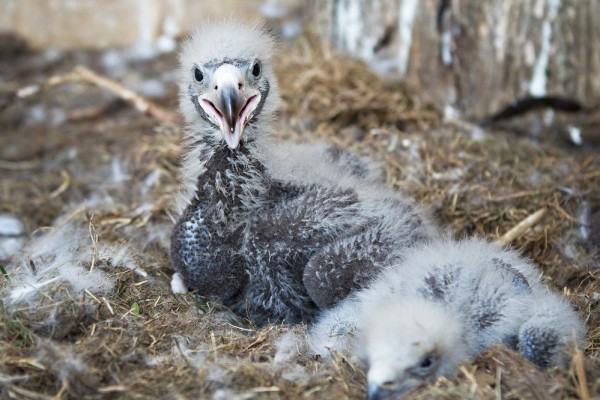Matyáš and Matylda Have Twins
19. 03. 2014
Prague Zoo can be proud of their most productive couple of the Steller’s Sea Eagle. The imposing birds of prey Matyáš and Matylda settled on their nest in the end of January and two eaglets have hatched recently.

Majestic Matyáš is a prominent celebrity of Prague Zoo. Photo: Tomáš Adamec, Prague Zoo
Steller’s Sea Eagle, sometimes called Pacific Eagle, is a majestic bird of prey, attractive due to its size as well as its overall striking appearance. Matyáš and Matylda represent the species In Prague Zoo.
Injured eagle
“We brought this couple together eight years ago when Matyáš arrived to Prague after his wing injury. We were worried at first about its courtship with Matylda due to the injury. Fortunately, both of them showed mutual affection,” Antonín Vaidl, the curator of birds of Prague Zoo, described. “Later they proved to be outstanding parents who have raised over ten chicks.”
Find them at the lower part of the Zoo
This year’s nesting took place quite early. Matylda laid eggs at the turn of January. Together with Matyáš they settled on their nest and after 42 days of incubation period the twins hatched.
“The eaglets will remain in the nest. Their parents will care for them for about 3.5 months. Afterwards they will start jumping to the edge of the nest, and then fly out,” Mr Vaidl commented. Visitors can have a look into the couple’s private life and observe their loving care. Bird of prey aviary is located at the lower part of the Zoo.
 Endangered species
Endangered species
Steller´s Sea Eagle is an endangered species with remaining population in the wild being estimated around 5000 individuals. Their number consistently decreases due to the pollution and changes of the environment. Its conservation status has been set as vulnerable. Therefore each chick that is bred in a zoo is a reinforcement of the back-up population.








